Nobel laureates at Scripps Research
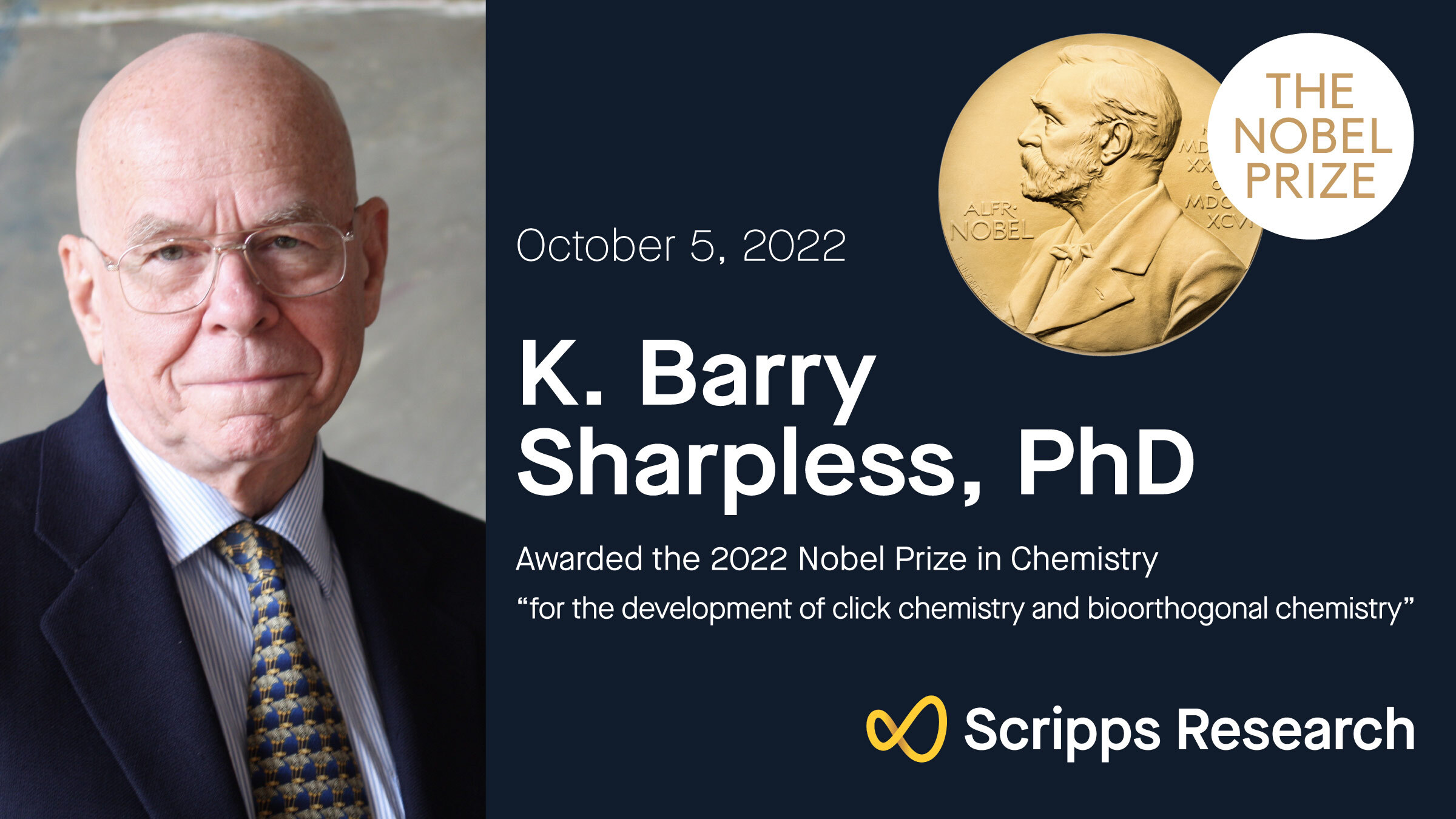
2022 Nobel Prize in Chemistry: K. Barry Sharpless, PhD
Sharpless is awarded the 2022 Nobel Prize in Chemistry for the development of click chemistry and bioorthogonal chemistry. He is one of only two chemists to ever receive such an honor.
Scripps Research professor K. Barry Sharpless, PhD, has been awarded the 2022 Nobel Prize in Chemistry for his groundbreaking research in developing “click chemistry,” an ingenious method for building molecules.
Sharpless, the W.M. Keck Professor of Chemistry, shares the prize with Carolyn R. Bertozzi, PhD, of Stanford University and Morten Meldal, PhD, of the University of Copenhagen for the development of click chemistry and bioorthogonal chemistry, according to the Nobel Prize committee.
Sharpless previously shared the 2001 Nobel Prize in Chemistry for his work on chirally catalyzed oxidation reactions, making him the second scientist ever to win two Nobel Prizes in Chemistry. Frederick Sanger won the Nobel Prize in Chemistry in 1958 and 1980.
“Barry Sharpless has had a tremendous impact on chemistry, first with his development of asymmetric synthesis and now with his elegant ‘click chemistry,’” says Peter Schultz, PhD, President and CEO of Scripps Research. “His work opened whole new scientific frontiers that have had a major impact on the fields of chemistry, biology and medicine. Barry has a remarkable combination of chemical insight, uncanny intuition and real-world practicality—he is a chemist’s chemist and a wonderful colleague.”
“Click chemistry”—a term Sharpless coined—is a set of methods for constructing chemical compounds via irreversible, highly efficient reactions between smaller molecules. The “click” refers to the LEGO™-like ease of fitting these modular elements together. This platform has transformed how scientists approach drug discovery, bioimaging and even more.
“This year’s Prize in Chemistry deals with not overcomplicating matters, instead working with what is easy and simple. Functional molecules can be built even by taking a straightforward route,” stated Johan Åqvist, Chair of the Nobel Committee for Chemistry.
Sharpless first studied chemistry at Dartmouth College, later going on to receive his PhD in Chemistry from Stanford University. Before joining Scripps Research, he was a professor in chemistry at the Massachusetts Institute of Technology (MIT) and Stanford.
Sharpless has received countless awards and honors for his foundational work in the field, including—most recently—the Royal Society of Chemistry’s Sir Derek Barton Gold Medal. Today, the Sharpless lab pursues useful new reactivity and general methods for selectively controlling chemical reactions.
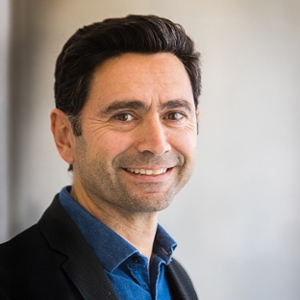
2021 Nobel Prize in Physiology or Medicine: Ardem Patapoutian, PhD
Unlocking the sense of touch opens doors to the unexpected
Solving a fundamental question, how the brain perceives pressure and touch, has opened a multitude of scientific discoveries, and merited Scripps Research neuroscientist Ardem Patapoutian, PhD, the 2021 Nobel Prize in Physiology or Medicine.
The prize was announced by the Nobel Assembly at the Karolinska Institute in Stockholm, Sweden on Monday, Oct. 4, 2021. Patapoutian shares the prize with David Julius, PhD, of the University of California, San Francisco, “for their discoveries of receptors for temperature and touch.”
Patapoutian found the ability to sense the firm grip of a handshake or the softness of a kiss depends upon unique, elegant mechanical devices encoded by our own genes.
These genes, called PIEZO1 and PIEZO2, produce proteins with an extraordinary shape. Called ion channels, they contain an assembly of curved blades encircling a central pore. Pressure causes the pore to open and close. This allows electrically charged ions to cross into and out of the cell, in the process, setting off a signaling cascade to other cells and the brain.
The devices are so sensitive that they can detect an indentation 1,000 times thinner than a human hair, Patapoutian says. The discoveries have been like “a key that unlocks a door that opens to a room,” he says.
They have unlocked understanding of proprioception, our ability to sense body position and motion. They have provided insights into blood pressure regulation and iron metabolism. They direct the ability to sense lung volume and bladder fullness. They revealed the cause of a specific kind of pain, called allodynia. And in a surprise, a version of the PIEZO genes appear to play a role in the plant kingdom as well, allowing the tips of roots to sense where to grow.
“The beauty of basic science is that sometimes you go seeking X but find Y, and it is just as interesting. So research takes us to unexpected directions, and that is a very interesting part of doing science,” Patapoutian says.
Patapoutian is the Scripps Research Presidential Endowed Chair in Neurobiology, Professor in the Department of Neuroscience, and Investigator with the Howard Hughes Medical Institute. His laboratory is located in the Dorris Neuroscience Center at Scripps Research in La Jolla, CA.
“Often times these prizes are given to one or two people, but I want to emphasize that there is a whole field of people working in this area,” he says. “Specifically in my lab, there’s a big group of young, enthusiastic, smart scientists, graduate students and postdocs who actually do the work. I share this with all of them, of course.”
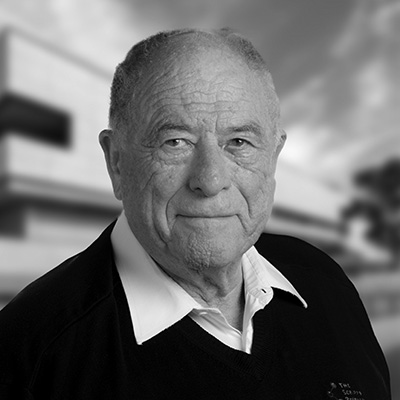
2002 Nobel Prize in Chemistry: Kurt Wüthrich, PhD
Kurt Wüthrich, PhD, was awarded the 2002 Nobel Prize in Chemistry “for his development of nuclear magnetic resonance spectroscopy for determining the three-dimensional structure of biological macromolecules in solution."
Until recently, no microscope could enable the viewing of biological molecules like proteins in their natural shape. The development of nuclear magnetic resonance (NMR) made it possible beginning in 1985, and that is due significantly to the analytical and computational work of Kurt Wüthrich, PhD, the Cecil H. and Ida M. Green Professor of Structural Biology in the Scripps Research Department of Integrative Structural and Computational Biology.
Thanks to his discoveries, NMR is now used widely to visualize small molecules like medications in complex with their biological disease targets, facilitating the search for treatments for virtually all diseases.
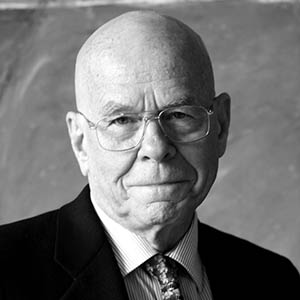
2001 Nobel Prize in Chemistry: K. Barry Sharpless, PhD
Scripps Research chemist K. Barry Sharpless, PhD, shared the 2001 Nobel Prize in Chemistry for developing innovative reactions that add oxygen onto carbon molecules through the use of novel catalysts.
The mirror image of molecules frequently have different chemical properties, a trait referred to as chirality. So a challenge of organic synthesis – building larger molecules out of smaller parts – is to reliably make the left-handed molecules but not the right-handed ones, or vice-versa.
Sharpless’ creative methods for doing so are used widely in many industries. Pharmaceutical companies worked from his reactions, for example, ( epoxidation with osmium catalysts) to manufacture medicines such as beta blockers, which are used to treat heart arrhythmias and blood pressure problems.
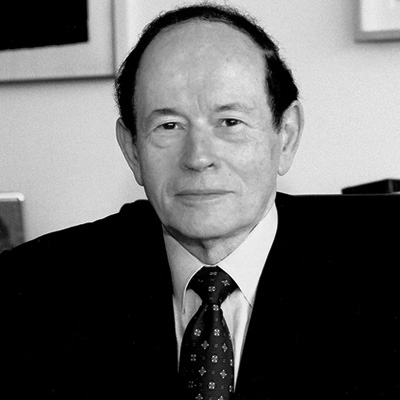
1972 Nobel Prize in Physiology or Medicine: Gerald Edelman, MD, PhD
Gerald Edelman, MD, PhD, shared the 1972 Nobel Prize in Physiology or Medicine for “discoveries concerning the chemical structure of antibodies.”
Released by immune cells upon infection, antibodies are highly specialized proteins that recognize pathogens to destroy them with the help of other immune defenses. Until Edelman and fellow laureate Rodney Robert Porter discovered their chemical structure, no one understood how such similar looking proteins could be so specific in their germ-targeting abilities. With the available technologies of the time, solving antibodies’ structure required breaking the large proteins into smaller sub-units. Porter and Edelman took different approaches. Edelman, working at the Rockefeller University at the time, employed solvents to disassemble the chain-like structures of the Y-shaped proteins. Edelman joined the Scripps Research faculty in 1992. He passed away in 2014, but the impact of his work continues.
Today, antibodies’ unique talent for binding with specificity to molecular targets has been put to use for many purposes. They are manufactured and directly administered as medicines against infectious diseases like COVID-19. They are engineered and used by chemists to catalyze desired reactions. They are used to provide a structural “map” for drug development. And they are used like missile guidance systems against hard-to-treat cancers, by appending chemotherapy payloads, for example.
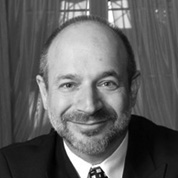
2011 Nobel Prize in Physiology or Medicine: Bruce Beutler, MD
Bruce Beutler, MD, shared the 2011 Nobel Prize in Physiology or Medicine for discoveries “concerning the activation of innate immunity."
The human immune system is comprised of two different systems, innate and adaptive. While the adaptive system involves highly specific antibodies, the innate system relies on inflammation and swelling.
Beutler’s discoveries about how innate immunity is triggered grew out of his research into septic shock. He found that a protein called a toll-like receptor became activated on contact with a bacterial substance called a lipopolysaccharide (LPS). That event activated a cascade of events resulting in inflammation, and in extreme cases, septic shock.
Beutler’s work on toll-like receptors and LPS activators spanned his faculty positions with the Rockefeller University, Scripps Research and the University of Texas Southwestern Medical Center, where he is currently based.
The Nobel organization notes in their description of his work, “These discoveries sparked off explosive development in the field of research on innate immunity.”

